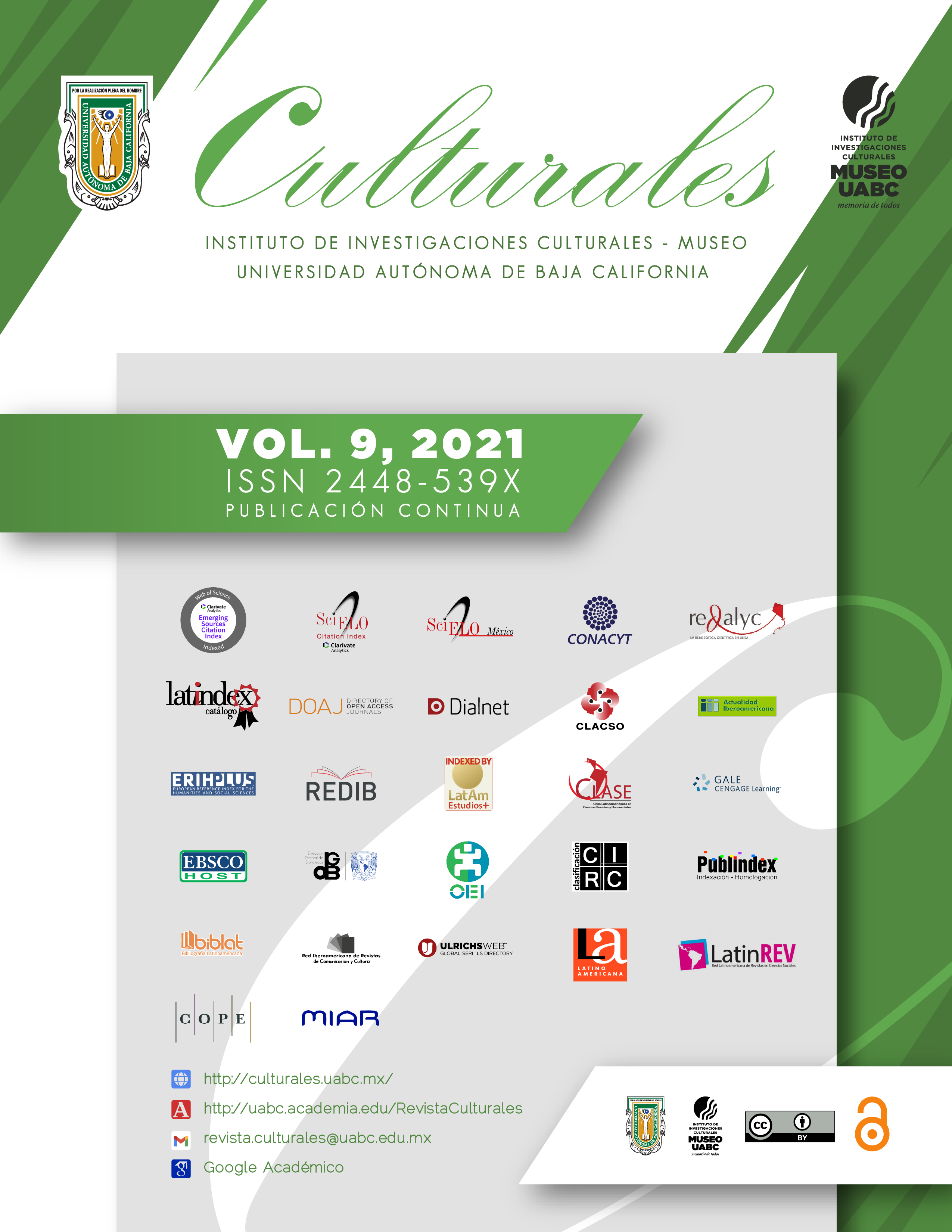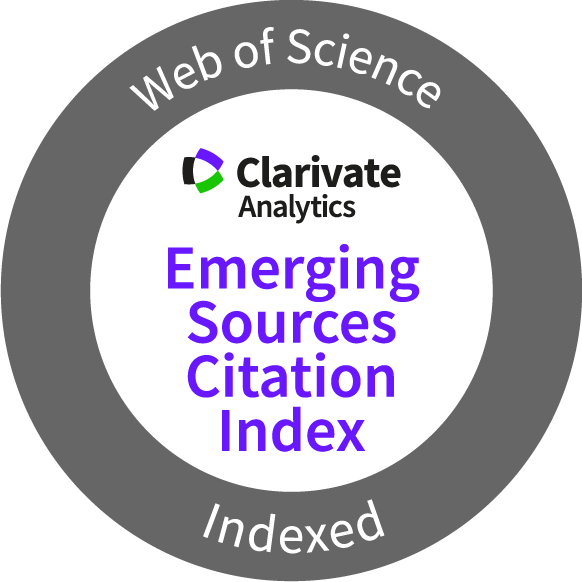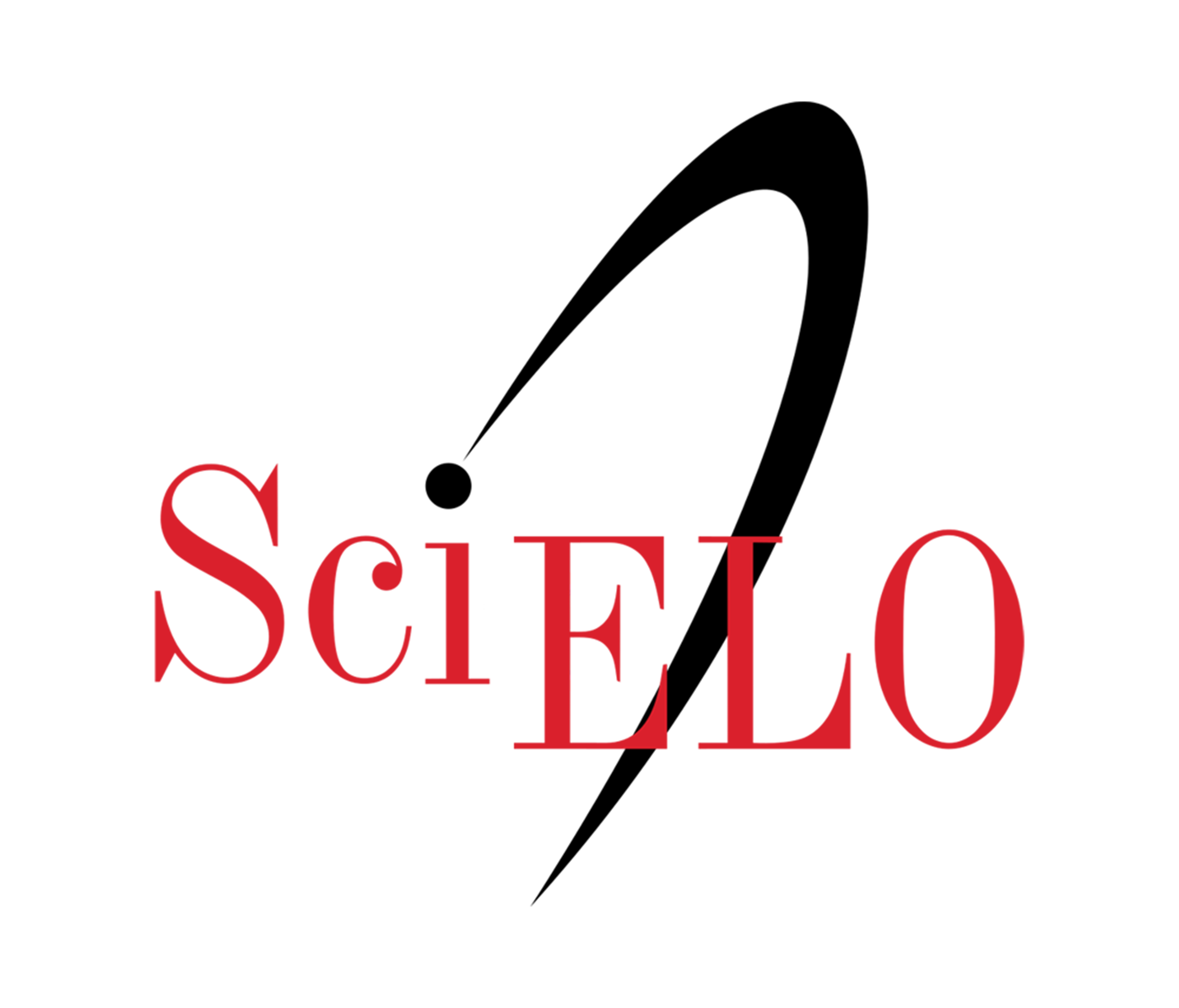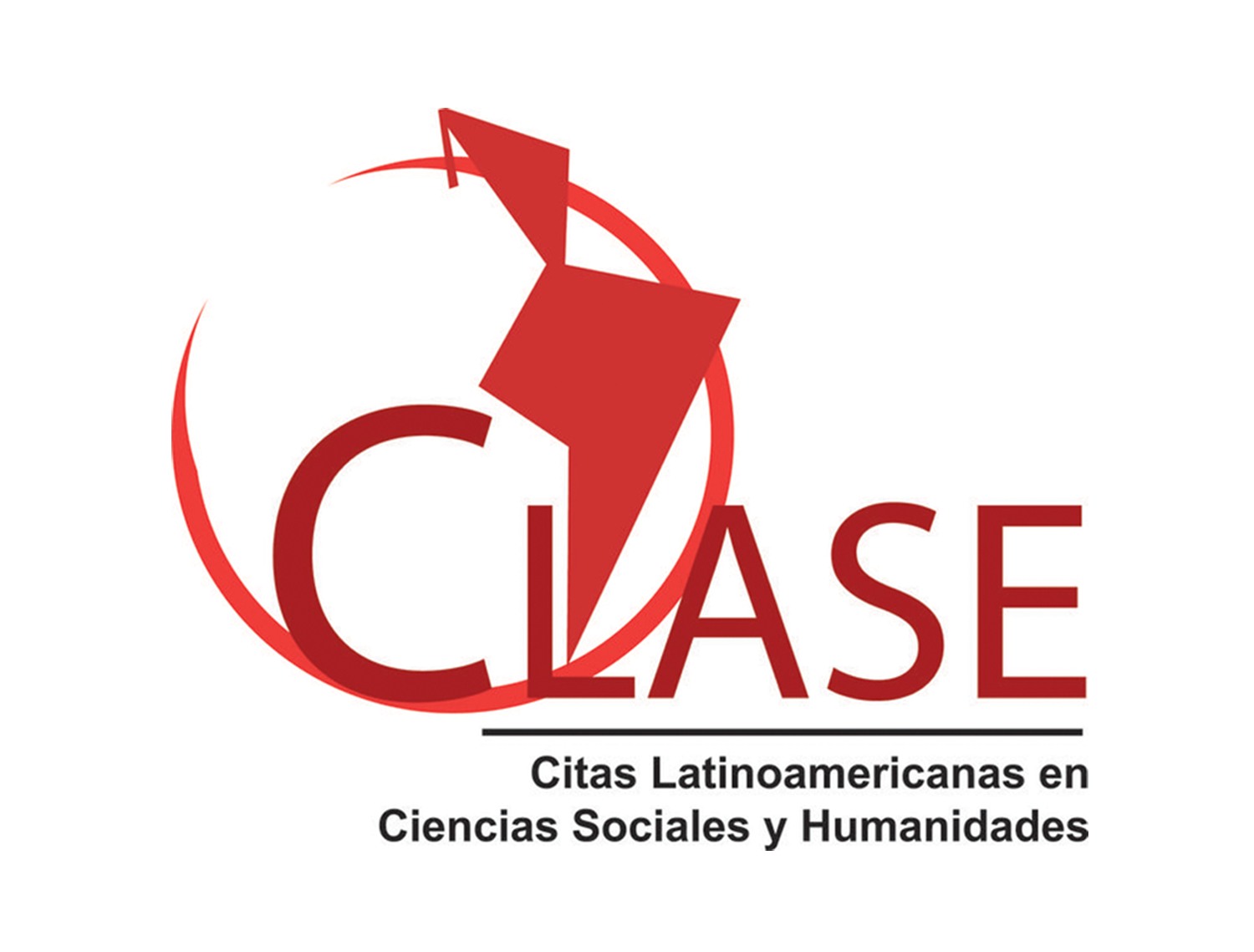Old categories and new wine geographies. Discussing the creation of value, tradition and identity
DOI:
https://doi.org/10.22234/recu.20210901.e609Palabras clave:
New wine geographies, value, terroir, tradition, identityResumen
Wine production is a cultural, creative, versatile activity, and at the same time, it carries conservative and traditional ideas and classifications that, in some cases, do not fit the dynamism and diversity of the global wine scenery. To achieve a better understanding and with the hope to eventually overcome this complex decalage, this article presents a theoretical discussion of value creation in the context of emerging wine-growing areas. The need to incorporate a socio-anthropological perspective to the study of value is explained, and the limits posed by the reproduction of representation and valorization models based on the classic discourse versions of terroir, tradition, and identity are argued. Given the fact that the worlds of wine (Old/New/Third), are being expanded and transformed, this paper shows that the new wine geographies offer a valuable testing ground for a well-aimed interpretation of the winemaking scenarios of the 21st century.
Descargas
Citas
Alonso, A. & Northcote, J. (2009). Wine, history, landscape: origin branding in Western Australia. British Food Journal, 111(11), 1248-1259.
Anderson, K., Norman, D., & Wittwer, G. (2003). Globalisation of the world’s wine markets. The World Economy, 26(5), 659-687.
Anderson, K., & Nelgen, S. (2011). Wine’s globalization: the next phase. In K. Anderson & S. Nelgen (Eds.) Global Wine Markets, 1961 to 2009: A statistical compendium, pp. 27-32, Adelaide: University of Adelaide Press.
Anderson, K., & Pinilla, V. (2018). Wine globalization. A new comparative history. Cambridge: Cambridge University Press.
Appadurai, A. (1986). Introduction: commodities and the politics of value. In A. Appadurai (Ed.) The social life of things: Commodities in cultural perspective, pp. 3-63, Cambridge: Cambridge University Press.
Appadurai, A. (1996). Global ethnoscapes: Notes and queries for a transnational anthropology. In D. Gaonkar & B. Lee (Eds.) Modernity at large: Cultural dimensions of globalization, pp. 48-65, Minneapolis: University of Minnesota Press.
Avanza, M., & Laferté, G. (2005). Dépasser la « construction des identités » ? Identification, image sociale, appartenance. Geneses, 61(4), 134-152.
Barker, J. (2004). Different worlds: law and the changing geographies of wine in France and New Zealand (doctoral thesis). University of Auckland, New Zealand.
Banks, G., & Overton, J. (2010). Old world, new world, third world? Reconceptualizing the worlds of wine. Journal of Wine Research, 21(1), 57-75.
Banks, G. (2013). Between old worlds and the new? Transcending place and space in the contemporary geography of wine. Introduction. EchoGéo, 23, 1-5.
Banks, G., Klinsrisuk. R., Dilokwanich. S., & Stupples., P. (2013). Wines without latitude: Global and local forces and the geography of the Thai wine industry. EchoGéo, 23, 1-18.
Barham, E. (2003). Translating terroir: the global challenge of French AOC labeling. Journal of Rural Studies, 19, 127-138.
Beckert, J., Rössel, J., & Schenk, P. (2014). Wine as a cultural product: Symbolic capital and price formation in the wine field. In Max Planck Institute for the Study of Societies. https://www.mpifg.de/pu/mpifg_dp/dp14-2.pdf
Black, R. & Ulin, R. (2013). Wine and culture: Vineyard to glass. London: Bloomsbury.
Blouin, J. & Peynaud, E. (2006). Enología práctica: Conocimiento y elaboración del vino (E. Cotillas, Trans.). Madrid: Mundi Prensa. (Original work published 2003).
Bourdieu, P. (1990). Sociología y Cultura (M. Pou, Trans.). Mexico: Grijalbo. (Original work published 1984).
Bourdieu, P. (1998). La distinción. Criterios y bases sociales del gusto (M. Ruiz de Elvira, Trans.). Madrid: Taurus. (Original work published 1979).
Bourdieu, P. (2007). El sentido práctico (A. Dilon, Trans.). Buenos Aires: Siglo Veintiuno Editores. (Original work published 1980).
Bowen, S. (2010). Embedding local places in global spaces: geographical indications as a territorial development strategy. Rural Sociology, 75(2), 209-243.
Brubaker, R., & Cooper, F. (2000). Beyond “identity”. Theory and Society, 29(1), 1-47.
Cappeliez, S. (2017). How well does terroir travel? Illuminating cultural translation using a comparative wine case study. Poetics, 65, 24-36.
Carter, E. (2018). For what it’s worth: The political construction of quality in French and Italian wine markets. Socio-Economic Review, 16(3), 479-498.
Charters, S. & Spielmann, N. (2014). Characteristics of strong territorial brands: the case of champagne. Journal of Business Research, 67, 1461-1467.
Christensen, B., Martin, K., & Donald, P. (2015). Regional identity can add value to agricultural products. California Agriculture, 69(2), 85-91.
Contreras, H. J., & Gracia, A. M. (2005). Alimentación y cultura: Perspectivas antropológicas. Barcelona: Ariel.
Corona, S. (2002). La vitivinicultura en el pueblo de Santa María de las Parras. Producción de vinos, vinagres y aguardientes (Siglos XVII y XVIII) (doctoral thesis) Universidad Iberoamericana, Mexico.
Corona, S. (2011). Turismo del vino en la D.O “Valle de Parras” Coahuila, México. In X. Medina, D. Serrano & J. Tresserras (Eds.) Turismo del vino. Análisis de casos internacionales, pp. 159-171, Barcelona: Editorial UOC
Covarruvias, J. & Thach, L. (2015). Wines of Baja Mexico: A qualitative study examining viticulture, enology, and marketing practices. Wine Economics and Policy, 4, 110-115.
De Jesús, D. & Thomé, H. (2019). Wine tourism and wine routes in Mexico. State of knowledge and case studies. RIVAR, 6(17), 27-44.
De Jesús, D., Thomé, H., Espinoza, A. & Vizcarra, I. (2019). Trayectoria territorial de la región enológica de Querétaro, México (1970-2017): Enoturismo y calidad territorial. Cuadernos Geográficos 58(2), 240-261.
De Jesús, D., Thomé, H., Espinoza, A. & Medina, X. (2020). Enoturismo y promoción del territorio. Análisis comparativo entre el nuevo y el viejo mundo del vino. Pasos, 18(3), 457-471.
Demossier, M. (2005). Consuming Wine in France: The wandering drinker and the vin-anomie. In T. M. Wilson (Ed.), Drinking Cultures: Alcohol and Identity, pp.129-154, New York: Berg.
Demossier, M. (2011). Beyond terroir: territorial construction, hegemonic discourses, and French wine culture. Journal of the Royal Anthropological Institute, 17(4), 685-705.
Demossier, M. (2013). Following grands crus: Global markets, transnational histories and wine. In R. Black. and R. C. Ulin (Eds.) Wine and Culture: Vineyard to Glass, pp. 183-200, London: Bloomsbury.
Demossier, M. (2018). Burgundy: The global story of terroir. New York: Berghahn Books.
Demossier, M. (2020). Reflexive imbrications: Burgundy and the globalization of terroir. In D. Inglis, and A. Almila (Eds.) The Globlalization of Wine, pp. 47-65, London: Bloombury Academic.
Douglas, M. & Nicod, M. (1974). Taking the biscuit: the structure of British meals. New society, 637, 744–747.
Escobar, A. (2001). Culture sits in places: reflections on globalism and subaltern strategies of localization. Political Geography, 139-174.
Ferguson, P. (1998). A cultural field in the making: Gastronomy in 19th-century France. The American Journal of Sociology, 104(3), 597-641.
Fernández, J. (2012,) “El vino está de moda. Once grandes del viñedo español hablan de estilo”. El País Semanal, no. 1881, October, pp. 46-53.
Fischler, C. (1979). Gastro-nomie et gastro-anomie: Sagesse du corps et crise bioculturelle de l’alimentation moderne. Communications, 31, 189-210.
Fourcade, M. (2012). The vile and the noble: On the relation between natural and social classifications in the French wine world. Sociological Quarterly, 53(4), 524-545.
Friedman, J. (1994). Identidad cultural y proceso global (E. Sinnot, Trans.). Buenos Aires: Amorrortu (Simultaneously published for Sage Publications).
Frigolé, J. (2014). Retóricas de la autenticidad en el capitalismo avanzado. Énedosa: Series Filosóficas, 33, 37-60.
García, N. (1999). La globalización imaginada. Buenos Aires: Paidós.
Giddens, A. (1991). The consequences of modernity. Cambridge: Polity Press
Giménez, G. (1997). Materiales para una teoría de las identidades sociales. Frontera Norte, 9(18), 9-28.
Graeber, D. (2001). Anthropological theory of value: The false coin of our own dreams. New York: Palgrave.
Graeber, D. (2005). Value: anthropological theories of value. In J. Carrier (Ed.) The Handbook of Economic Anthropology, pp. 439-455, Cheltenham: Edward Elgar.
Gupta, A. & Ferguson, J. (1992). Beyond “culture”: Space, identity, and the politics of difference. Cultural Anthropolgy, 7(1), 6-23.
Hall, S., Held, D., Hubert, D. & Thompson, K. (1996). Modernity: an introduction to modern societies. Malden: Blackwell.
Harvey, D. (1982). The limits to capital. Oxford: Basil Blackwell.
Harvey, D. (1990). The condition of postmodernity: An enquiry into the origins of cultural change. Cambridge: Blackwell.
Harvey, D. (2002). The art of rent: Globalization, monopoly and the commodification of culture. Socialist Register, 38, 93-110.
Henderson, G. (1998). Nature and fictitious capital: The historical geography of an agrarian question. Antipode, 30(2), 73-118.
Herzfeld, M. (2004). The body impolitic. Artisans and artifice in the global hierarchy of value. Chicago: The University of Chicago Press.
Hillel, D., Belhassen, Y. & Shani, A. (2013). What makes a gastronomic destination attractive? Evidence from the Israeli Negev. Tourism Management, 36, 200-209.
Hinrichs, C. (2003). The practice and politics of food system localization. Journal of Rural Studies, 19, 33-45.
Hira, A & Swartz, T. (2014). What makes Napa Napa? The roots of success in the wine industry. Wine Economics and Policy, 3, 37-53.
Hobsbawm E. & Ranger, T. (1983). The invention of tradition. Cambridge: Cambridge University Press.
Inglis, D. (2020). Wine globalization: Longer-term dynamics and contemporary patterns. In A. Inglis, David & Almila (Eds.) The globlalization of wine, pp. 21-47, London: Bloombury Academic.
Inglis, D. & Almila, A. (Eds.) (2020). The globalization of wine. London: Bloombury Academic.
Ingold, T. (1993). The temporality of the landscape. World Archaeology, 25(2), 152-174.
Ingold, T. (2000). The perception of the environment: Essays on livelihood, dwelling and skill. London: Routledge.
Jung, Y. (2014). Tasting and judging the unknown terroir of the Bulgarian wine: The political economy of sensory experience. Food and Foodways, 22, 24-47.
Jung, Y. (2016). Re-creating economic and cultural values in Bulgaria’s wine industry: From an economy of quantity to an economy of quality? Economic Anthropology, 3, 280-292.
Kearney, M. (1995). The Anthropology of Globalization and Transnationalism. Annual Review of Anthropology, 24, 547-565.
Kirshemblatt-Gimblett, B. (1998). Destination culture: tourism, museums and heritage. Berkeley: University of California Press.
Kirshenblatt-Gimblett, B. (2004). Intangible heritage as metacultural production. Museum International, 56(1-2), 52-65.
Kopytoff, I. (1986). The cultural biography of things: commoditization as process. In A. Appadurai (Ed.), The social life of things: Commodities in cultural perspective, pp. 64-91, Cambridge: Cambridge University Press.
Li, H., Wang, H., Li, H., Goodman, S., Van der Lee, P., Xu, Z., Fortunato, A. & Yang, P. (2018). The worlds of wine: Old, new and ancient. Wine Economics and Policy, 7(2), 178-182.
Lizardo, O. (2006). How cultural tastes shape personal networks. American Sociological Review, 71, 778-807.
Massey, D. (1991). A global sense of place. Marxism Today, 24–29. http://banmarchive.org.uk/collections/mt/pdf/91_06_24.pdf
McCoy, E. (2018, October 15). Why would anyone ever pay $558,000 for a bottle of wine? Bloomberg.https://www.bloomberg.com/news/articles/2018-10-15/most-expensive-bottle-wine-1945-romanee-conti-burgundy-auction
Medina, X. (2017). Reflexiones sobre el patrimonio y la alimentación desde las perspectivas cultural y turística. Anales de Antropología, 51, 106-113.
Miller, D. (2008). The uses of value. Geoforum, 39, 1122-1132.
Monroe, R. (2019, November 18). How natural wine became a symbol of virtuous consumption. The New Yorker. https://www.newyorker.com/magazine/2019/11/25/how-natural-wine-became-a-symbol-of-virtuous-consumption
Murdoch, J., Marsden, T. & Banks, J. (2000). Quality, nature, and embeddedness: Some theoretical considerations in the context of the food sector. Economic Geography, 76(2), 107-125.
Ong, A. & Collier, S. J. (2005). Global assemblages: Technology, politics, and ethics as anthropological problems. Oxford: Blackwell Publishing.
Overton, J., Murray, W. & Banks, G. (2012). The race to the bottom of the glass? Wine, geography, and globalization. Globalizations, 9(2), 273-287.
Overton, J. & Banks, G. (2015). Conspicuous production: Wine, capital and status. Capital & Class, 39(3), 473 -491.
Paasi, A. (2002). Place and region: Regional worlds and words. Progress in Human Geography, 26(6), 802-811.
Paxson, H. (2010). Locating value in artisan cheese: Reverse engineering terroir for new-world landscapes. American Anthropologist, 112(3), 444-457.
Paxson, H. (2016). Re – inventing a tradition of invention: Entrepreneurialism as heritage American artisan cheesemaking. In R. Brulotte & M. Di Giovine (Eds) Edible identities: Food as cultural heritage. Burlington: Ashgate.
Prats, L. (1997). Antropología y patrimonio. Barcelona: Ariel.
Raftery, D. (2017). Producing value from Australia’s vineyards: an ethnographic approach to “the quality turn” in the Australia wine industry. Journal of Political Ecology, 24, 342-367.
Rainer, G. (2016). The making of the “world’s highest wine region”: globalization and viticulture restructuring in Salta (Nw Argentina). Erdkunde, 70(3) 255-269.
Rao, H. (2003). Institutional change in Toque Ville: Nouvelle cuisine as an identity movement in french gastronomy. American Journal of Sociology, 108(4), 795-843.
Robbins, J. (2015). Ritual, value, and example: On the perfection of cultural representations. Journal of the Royal Anthropological Institute, 21(S1), 18-29.
Robbins, J., & Sommerschuh, J. (2016). Values. In F. Stein, S. Lazar, M. Candea, H. Diemberger, J. Robbins, A. Sanchez & R. Stasch (Eds) The Cambridge Encyclopedia of Anthropology. http://doi.org/10.29164/16values
Roudometof, V. (2016). Glocalization: a critical introduction. European Journal of Social Theory, 19(3), 391-408.
Schmidt, C., Macchione, M. & Fowler de Ávila, G. (2014). Value creation and value appropriation in networks: an empirical analysis of the role of geographical indication in the wine industry in Vale Dos Vinhedos, RS, Brazil. Organizações Rurais & Agroindustriais, 16(3), 343-362.
Skinner, W. (2020). Wine, geology mapping and the value of place in McLaren Vale. Australian Journal of Anthropology, 31(1), 85-100.
Teil, G. (2012). No such thing as terroir? Objectivities and the regimes of existence of objects. Science Technology and Human Values, 37(5), 478-505.
Trubek, A. & Bowen, S. (2008). Creating the taste of place in the United States: can we learn from the French. GeoJournal, 73(1), 23-30.
Ulin, R. (2002). Work as cultural production: Labour and self- identity among southwest French wine – growers. Royal Anthropological Institute, 8, 691-712.
Unwin, T. (2012). Terroir: At the heart of geography. In P. Dougherty (Ed.), The geography of wine: Regions, terroir and techniques, pp. 37- 48, London: Springer.
Urry, J. (1995). Consuming places. New York: Routledge.
Winter, M. (2003). Embeddedness, the food economy and defensive localism. Journal of Rural Studies, 19, 23-32.
Descargas
Publicado
Cómo citar
Número
Sección
Licencia
Derechos de autor 2021 María del Carmen Salas Quesada, Sergio Alfonso Sandoval Godoy, Guillermo Núñez Noriega

Esta obra está bajo una licencia internacional Creative Commons Atribución 4.0.
Culturales permite compartir, copiar y redistribuir el material en cualquier medio o formato; adaptar, remezclar, transformar y crear a partir del material para cualquier propósito, incluso comercialmente, dando crédito a la obra de manera adecuada y proporcionando un enlace a la licencia indicando si se han realizado cambios.
Culturales se encuentra bajo la Licencia Creative Commons Atribución 4.0 Internacional (CC BY 4.0)






















